Brassia orchid: features, types and care
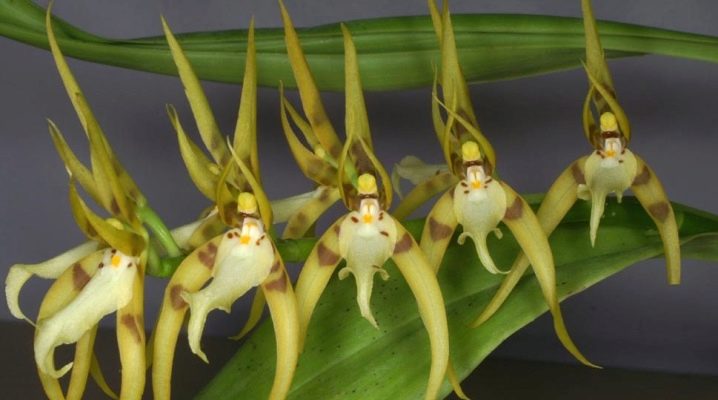
Among all plants suitable for growing at home, those that are distinguished by beautiful and long flowering are especially popular. These include brassia - an orchid, represented by many species, each of which has its own remarkable features. Decorating a home with its help is not difficult at all: it is enough to know the basic rules for caring for this plant, in order to avoid common mistakes and achieve the best visual result.
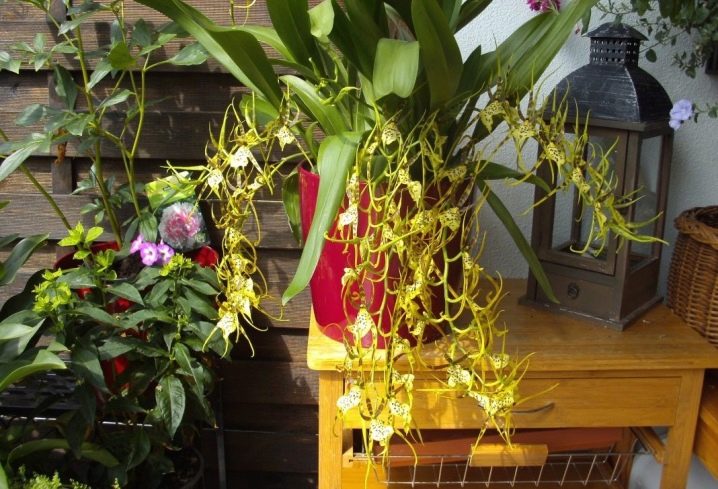
Peculiarities
The plant in question owes its name to William Brass, a famous botanist and illustrator who lived in the 18th century. The homeland of this orchid is the tropical and subtropical regions of Central and South America, whose forests are adorned with its numerous varieties. Scientifically, members of the Brassia genus belong to epiphytes - plants that use representatives of other species as a physical support.
The graceful buds and thin elongated petals of the described beauty deserve special attention, for which she was aptly nicknamed the spider orchid.
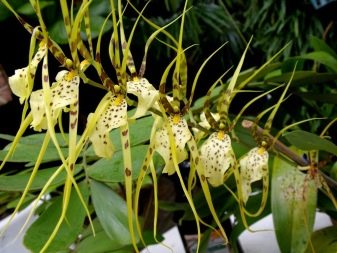
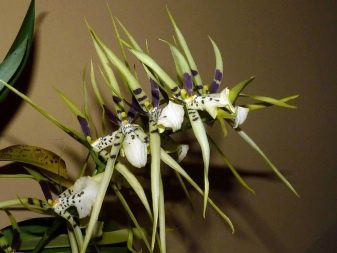
As for other features of brassia, they are listed below:
- medium sizes (most often the height of this orchid is in the range of 45-90 cm);
- false bulbs, also called tuberidia and pseudobulbs, which are pear-shaped and densely located in the rhizome area;
- large and smooth leaves, gradually tapering from base to edge and resembling a lancet;
- arched peduncles, the length of which varies from 15 to 75 cm;
- a creeping and short stem, which is the reason for the formation of pseudobulbs in a "ladder";
- large flowers, the diameter of which reaches 10-15 cm or more;
- arrangement of leaves with a rosette, shaped like a fan;
- varied color of flowers (from white, lemon and light green to purple and brown), complemented by dark spots scattered over their surface;
- a strong and pleasant aroma with notes of narcissus, vanilla and honey;
- the number of buds on one peduncle - up to 15;
- the number of leaves growing from one false bulb is from 2 to 3.
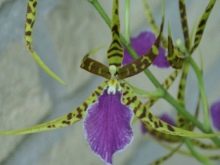

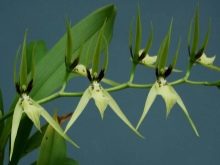
As a rule, brassia begins to bloom when it reaches 3-4 years of age, doing this several times during the calendar year. If the orchid grows at home, such periods can last from 2 decades to 2 months.
Popular types
Currently, the genus Brassia has 34 natural species. In addition, thanks to the efforts of breeders, more than three dozen hybrids have been obtained, resulting from the crossing of this plant with miltonia, oncidium and other representatives of the orchid family. If we highlight the most famous varieties of brassia, then their list will look like this.
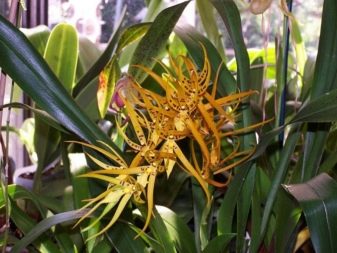
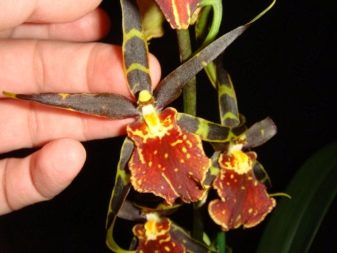
Warty
In its natural habitat, it adorns mountain forests, meeting at altitudes up to 1600 m above sea level. It is characterized by a large peduncle, the length of which reaches 75 cm, and light green petals with reddish-brown spots. Another interesting feature is the presence of convex dark growths, from which the species got its name.
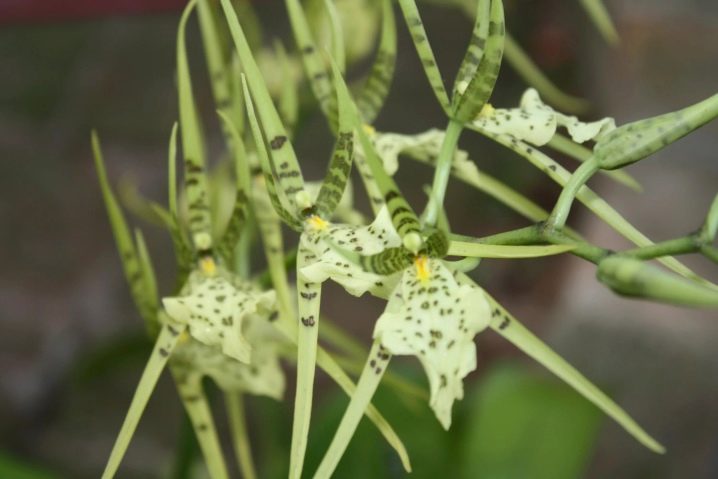
Tailed
Differs in long and beautifully curved peduncles, each of which can grow up to a dozen lemon-salad "spiders", decorated with variegated spots.
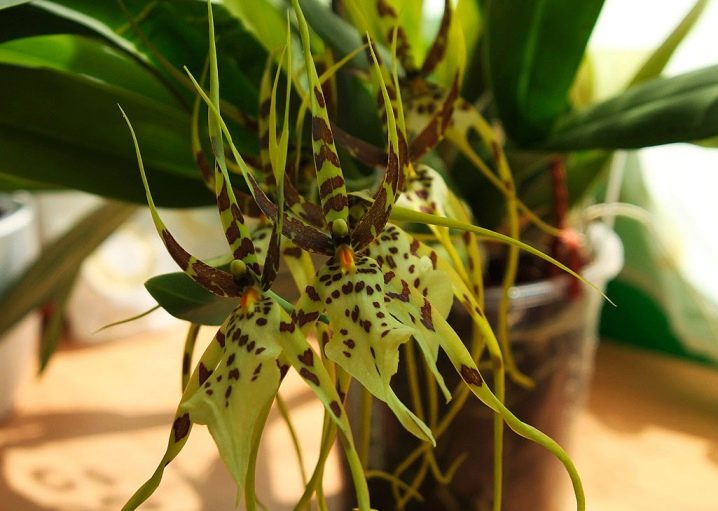
Orange
Being a mountain plant, it is found at altitudes reaching 2-2.5 km above sea level.Feature - the presence of red-orange flowers, outwardly resembling a bell, with oblong pointed petals.
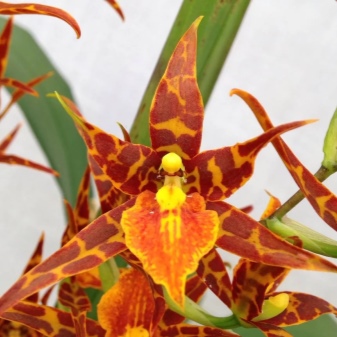

Spotted
It differs in somewhat larger, than in other types of brassia, buds that have a rich yellow color and are decorated with purple spots.
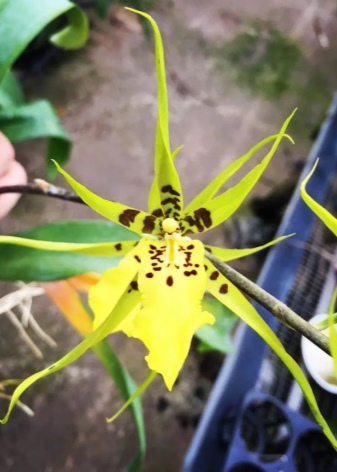
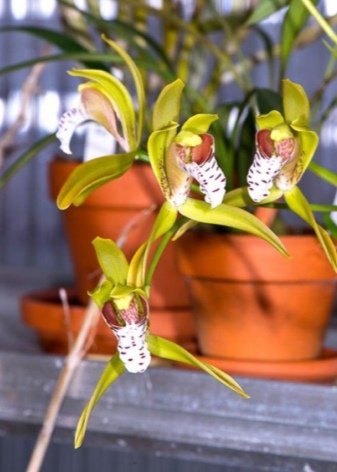
Summer Dream
One of the most spectacular species, characterized by bright lemon flowers with reddish-brown spots.
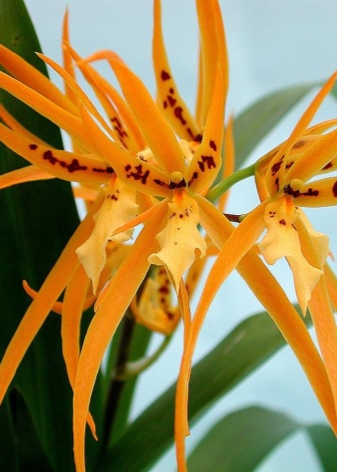
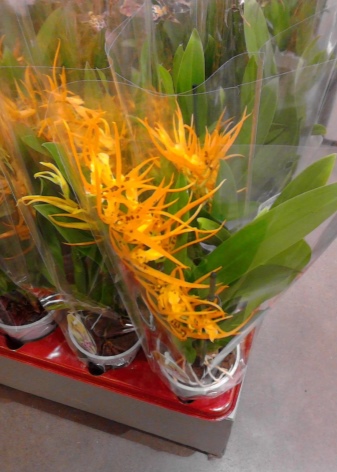
Popular hybrids worthy of mention - miltassia, notable for its lilac flowers, resembling stars in shape, and brassidium, whose "spiders" are distinguished by their variegated color and relatively short "legs". The first is a mixture of the plant in question with miltonia, while the second arose from the crossing of brassia with oncidium.
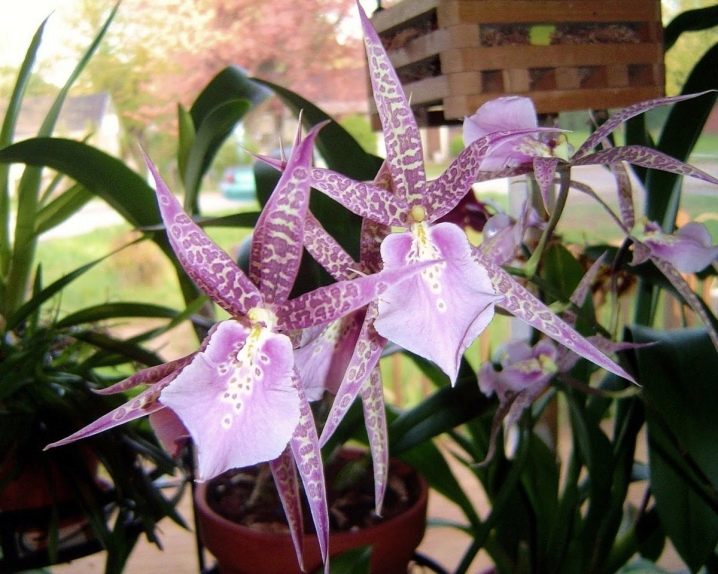
Home care
Practice shows that the brassia orchid is quite unpretentious, and therefore caring for it is not particularly difficult. In order for the plant to please with abundant and regular flowering, it is enough to create conditions that as close as possible to its natural habitat.
Illumination
For the full development of brassia need a lot of light, which makes it justified to place it near windows facing south-west or southeast. Another important condition is protecting the plant from direct sunlight at lunchtime, negating the likelihood of getting them dangerous burns.
During the warm season, it is advisable to place brassia on a balcony or loggia. Following this recommendation guarantees a sufficient amount of sunlight and fresh air, which has a positive effect on the development of the plant.
With the onset of winter, experts advise using phytolamps - devices that compensate for the lack of lighting and bring the duration of the latter to the required 10-12 hours a day.

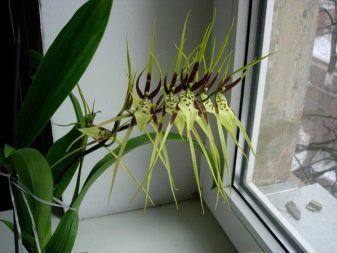
Temperature
The optimal regime for the development and regular flowering of the spider orchid assumes a difference between day and night temperatures of 5 ° C in summer and 3 ° C in winter. Besides, from May to September, the room should be warm enough (around 23 ° C), and not too cool in the frosty months (about 18 ° C).
Another condition, the observance of which allows you to grow a healthy and beautiful brassia - good air circulation in the room.
It is also necessary to protect the orchid from drafts that have a negative effect on it.
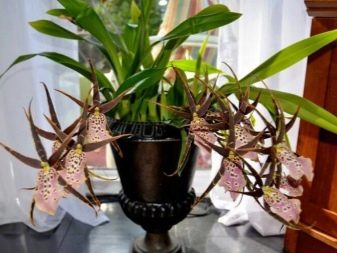
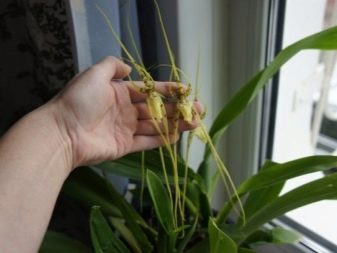
Humidity
Brassia is native to humid forests, which is why it does not tolerate dry air. To normalize the indoor climate, you can equip a decorative fountain near the plant or use special stationary devices. The most popular and inexpensive solution is the use of the simplest atomizer - a spray bottle.
When spraying brassia, it is necessary to ensure that water does not fall on the buds (ignoring this condition reduces the decorative effect of the plant). The procedure should be carried out 1-2 times a day, which is enough to maintain the humidity at the level of 50-70%.
It is also worth paying attention to the water used: it should be warm and soft.

Watering
Throughout the growing season, brassia needs good, but not too frequent watering. The signal indicating the need for this procedure is the drying out of the substrate. Particular attention should be paid to the condition of the leaves and false bulbs: the former should not be brought to a loss of turgor, and the latter, to shrinkage.
To provide the plant with sufficient moisture, it is advisable to use the method of immersion in a container of warm water for 20-25 minutes (at the end of the procedure, the latter should not remain in the pallet).
Excessive watering of brassia must be abandoned, as it can lead to decay of its root system.
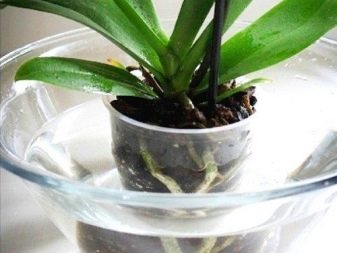
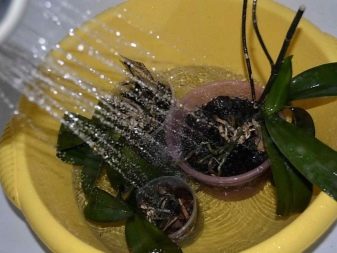
Priming
The substrate, which is optimally suitable for the houseplant in question, should be air permeable and have a pronounced friability. It is not worth using dense mixtures, which is explained by their suffocating effect on the brassia root system. Another important condition is using a soil that has a slightly acidic reaction (pH up to 6.5).
As for the composition of the substrate used, it is presented below:
- sphagnum moss;
- pieces of coniferous bark;
- peat;
- charcoal.
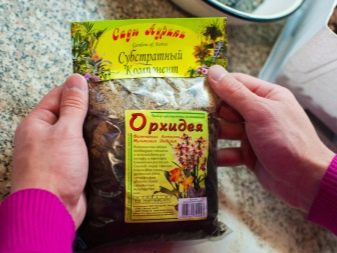

All ingredients must be mixed in equal proportions, not forgetting to place a layer of expanded clay at the bottom of the container used. If the mixture is prepared at home, all its components must be subjected to a 10-minute heat treatment.
Top dressing
In the warm season, brassia needs mineral fertilizers for orchids, applied monthly. The composition of such dressings provides for the presence of nitrogen, potassium and phosphorus, and they can be purchased at any specialized store.
In order for the fertilizers to be absorbed in the best possible way, they are dissolved in the water used to water the plant.
Particular attention should be paid to the concentration of the drug used, choosing the value indicated by its manufacturer.
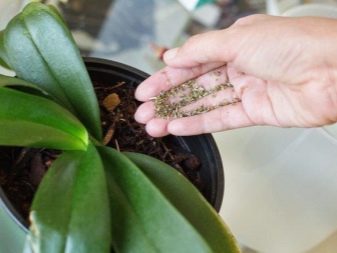
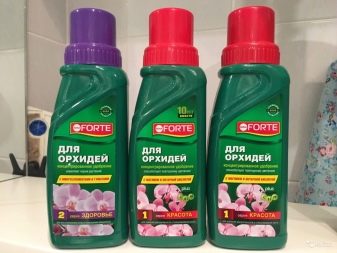
Diseases and pests
One of the most common plagues that brassia can suffer from is rot, which affects its false bulbs and root system. To prevent this trouble, you must follow the recommended watering regime (especially in the cold season). If the plant could not be protected from decay, it can be reanimated by following the following sequence of actions:
- carefully remove the affected areas;
- treat healthy areas with an antifungal agent;
- dry the brassia for several hours;
- plant the orchid in the ground and cover it with a transparent plastic container;
- air the greenhouse in a timely manner and monitor the level of moisture.
Of the parasites, brassia can be disturbed by the scale insect, mealybug and spider mite. To combat them, it is rational to use insecticides of a wide spectrum of action, performing the treatment twice, observing a weekly interval.

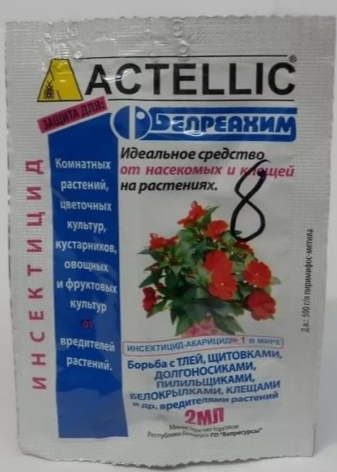
Transplant rules
The most common reasons that make this procedure necessary are lack of space for plant development and excessive compaction of the substrate. To solve this problem, you should consider a few simple rules:
- the frequency of the planned transplant is once every 2 years;
- the transshipment method avoids injury to the root system, and therefore is the most preferable;
- transplanting brassia during flowering is unacceptable;
- given the growth of false bulbs on one side, the plant should not be placed in the center;
- the used container should be 65-70% full (you need to leave room for new tuberidia growing on top of the previous ones).
In addition, false bulbs must not be buried in the substrate, which is explained by the need for their full ventilation.

How to propagate?
Taking into account the difficulty of germinating brassia seeds at home, it is advisable to give preference to reproduction by division. The latter is carried out in the spring and involves the implementation of four steps:
- carefully cut the orchid into several parts, leaving at least 3 false bulbs on each;
- treat damaged areas with charcoal powder;
- plant brassia in a previously prepared substrate;
- water the orchids thoroughly after 4 days.
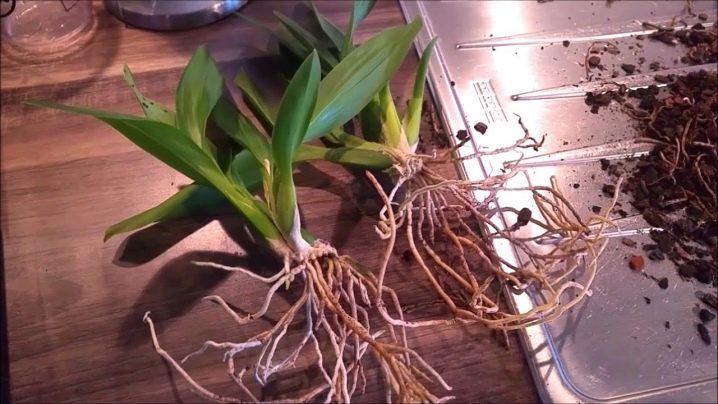
Also, experts advise to get rid of the first shoots that appear on young plants.
In conclusion, it remains to state that brassia is the optimal solution for every connoisseur of beauty and unpretentiousness. The validity of this thesis is regularly confirmed in practice, and everyone can be convinced of this from their own experience.
For transplanting the brassia orchid, see below.































The comment was sent successfully.